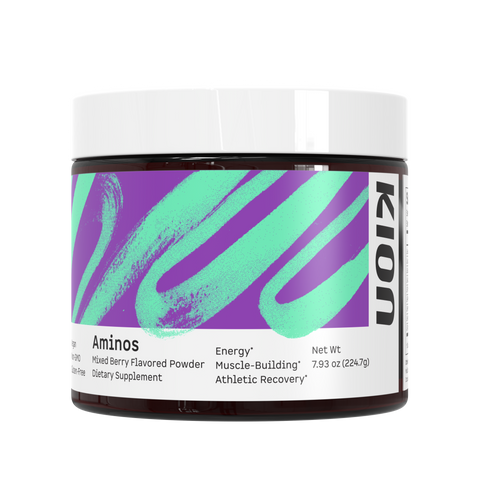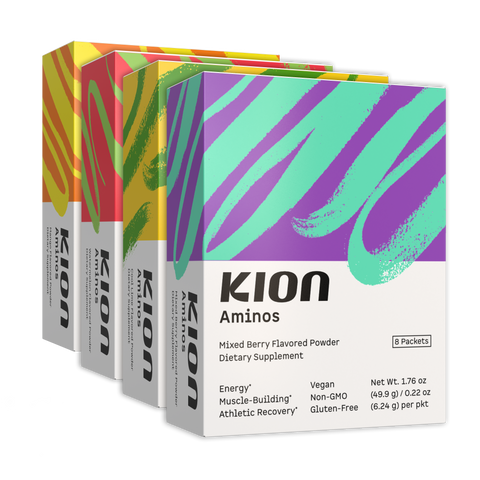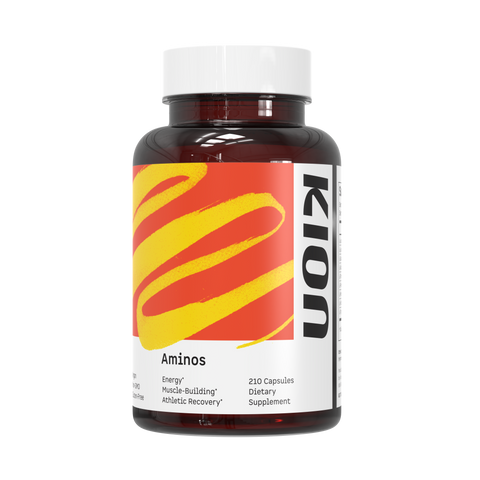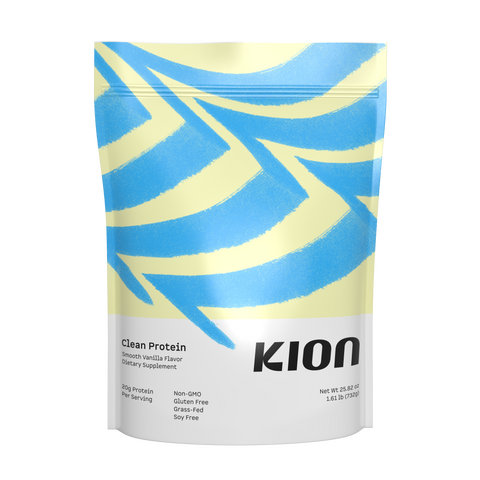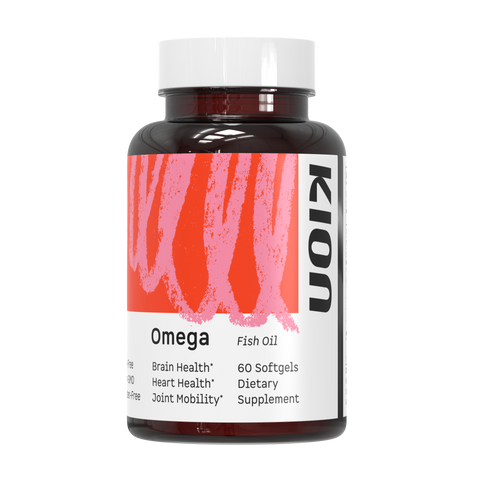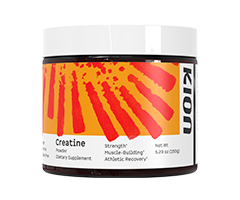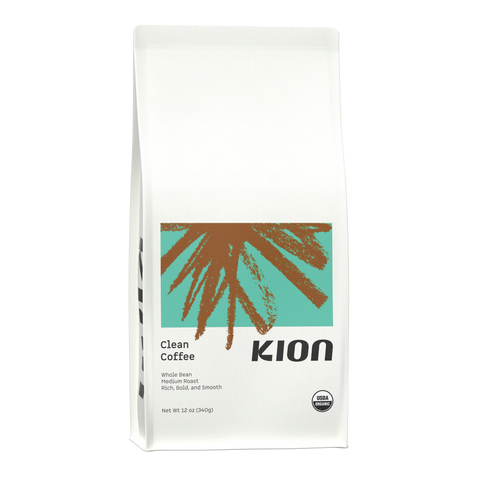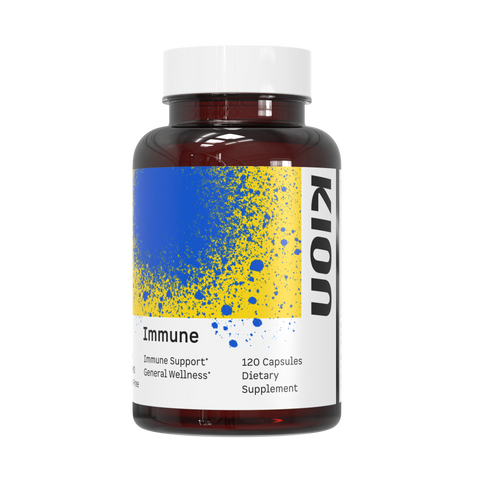From birth, humans are naturally attracted to pattern and symmetry.
As unfair as it may seem, athletic bodies and movie-star faces are almost universally considered more symmetrical and therefore more attractive. This is not just luck of the draw, but a pure reflection of the genetic wealth passed on by their parents.
Now, this may sound like a callous platform for vanity and bullying, but it’s based primarily on a physiological, naturalistic genetic principle that modern humans have inherited from our ancestors:
Form implies function.
Less attractive facial forms are those that are less functional. Children with suboptimal skull structure may need glasses, braces, or oral surgery, whereas children with more symmetrical, ideal cranial architecture won’t. For example, narrow nasal passages irritate the mucosa, increasing the chances of rhinitis and allergies. And, furthermore, when the airway in the back of the throat is improperly formed, a child may suffer from sleep apnea, which starves the brain of the oxygen needed to develop normal intelligence.
And beauty, especially judging how beautiful somebody is, can be a controversial topic and oftentimes seems inexplicable. However, beauty is, in fact, a natural phenomenon that can be measured. For instance, the perfect face has been mapped and biomathematicians confirm that phi and the Fibonacci Sequence are encoded in almost all living matter.
So if form implies function, then the beauty-health connection becomes more obvious. Musculoskeletal imbalances stemming from skeletal asymmetry are one of the leading causes of pain that brings people into the doctor's office. Looking outside the scope of humans, veterinarians, botanists, and breeders have no problem judging physical attractiveness based upon set principles. And when suboptimal offspring are delivered, they look to the nutrition of the parents to determine what went wrong. Something we should do a lot more of in Western medicine.
As irrelevant as these facts are to the contemporary “we’re all beautiful in a unique way” philosophy, they are incredibly relevant to you if you’re trying to reinvent your body or your health, or if you’re wanting to give your child the highest chances of health and success. Dr. Cate Shanahan, in her book “Deep Nutrition”, describes that the way people look speaks volumes about their health due to the “form implies function” principle. Growth anomalies in children are most often linked to genetic disease and internal organ malformation and these children often develop learning disorders, social disorders, and cancer.
Again, as unfair as it may be, physical development does have social consequences. People who are considered less attractive rate themselves as less happy, less healthy, and less popular. They earn less, are more depressed, and spend more time in jail. So knowing that you can impact your symmetry and beauty and that of your children, it is likely well worth learning more about.
The entire subject of optimizing appearance is incredibly emotionally charged, and goes even as far as physicians pretending that disfiguring birth defects and other developmental malformations are unavoidable. However, if doctors and nutritionists were willing to explore the connection between beauty and health, every child would have a better chance to grow up healthy. Whether it’s a cheetah, a baby, or a doctor, as far as our brains are concerned, symmetry and attractiveness equals health and fertility.
There are many causes of poor symmetry, three of which we'll explore in this article - as well as how to address them to become a more symmetrical (and by standard definition, more attractive) human being.
Symmetry Killer No. 1: Nutrient Deficiencies
Dr. Shanahan and Dr. Weston Price, leading experts in ancestral nutrition, have both explored the role of nutrient deficiencies in facial symmetry.
In Weston Price's fairly infamous book "Nutrition and Physical Degeneration", he describes how our ancestors formed full faces, straight teeth, and enhanced physical symmetry by including some combination of grass-fed meats, organ meats like liver, eggs from pastured chickens, raw milk and butter, cod liver oil, fish eggs, fermented foods (cheese, yogurt, sauerkraut, etc.), soaked nuts, properly prepared grains, fresh fruits and vegetables into their diets. These foods are some of the richest sources of fat-soluble vitamins A, D, E, and K.
On the other hand, Dr. Price also found that children who aren't exposed to high levels of these fat-soluble vitamins when they’re young or in the womb tend to have weak bone structures and significant amounts of facial asymmetries.
Sadly, deficiencies in these vitamins are very common today, likely due to the fact that many of us are not regularly consuming these vitamin-rich foods like organ meats, grass-fed butter, and bone broth.
For example, take vitamin A. Now, vitamin A is necessary for vision, and is often marketed as a supplement for eye health, but the truth is that less than 1% of the vitamin A you eat is used in this way. Much of the vitamin A you take in is used to maintain the morphological health and function of different epithelial tissues in your body (“epithelial” refers to one of the four main tissue types; it forms a lot of the outer coverings of different body parts, like the lining of the gut). Not only that, vitamin A is directly involved in maintaining normal phenotypic expression. Your phenotypes are your observable characteristics, as they’re expressed by your genetic code.
Therefore, lack of vitamin A in the diet could be a cause of improper genetic expression, which has obvious implications for maintaining physical symmetry, function, and beauty.
A study done on the effects of fat-soluble vitamin deficiency, in the absence of exposure to direct sunlight or artificial substitutes for it, concluded that the dietary vitamins play a key role in the deposition of calcium in bones, which means that a deficiency of these nutrients can result in rickets, or osteomalacia (softening of the bones). Vitamin D plays a particularly important role in the strengthening of bones, as well as the absorption and mobilization of calcium throughout the body. Once the prohormone vitamin D3 has been produced by the body (which occurs by exposure to direct sunlight), it’s processed first by the liver and then by the kidney, where it reaches its hormonal form. This form of the vitamin acts through a nuclear receptor to perform calcium absorption, phosphate absorption in the intestine, calcium mobilization in bone, and calcium reabsorption in the kidney.
Getting a solid dose of bone-shaping vitamin D is as simple as getting some sun, and letting your body do the work, or taking it as a supplement (ideally also combined with K2).
As narcissistic as it may seem, simply by adding these things to your children’s diet (or an expecting mother's diet), they might grow to be taller, more attractive, more symmetrical people. More than that, these traits may help gain them respect as they get older. Once again, form implies function, so the more symmetrical you are, the more you’ll come across as reliable, capable, and strong.
Symmetry Killer No. 2: Improper Breathing
In his book "The Oxygen Advantage", author Patrick McKeown highlights how mouth breathing can cause a recessed chin, less of a square jaw, a weaker look in the face. In other words, breathing in and out through your mouth, and not your nose, can actually change the shape and structure of your jaw.
Mouth breathing is more dangerous than it might seem at first glance. One study observed the skeletal and dental relationships under mouth breathing and nasal breathing. It found that mouth breathers have significantly greater anterior facial height, and their maxillae and mandibles were more retrognathic (retrognathia is an abnormal positioning of the lower jaw, where it sits much further back relative to the rest of the neck and skull than normal). Plus, the intermolar width (the space between molars on opposite sides of the mouth) was narrower in mouth breathers and was associated with a greater prevalence of cross-bite.
Retrognathia and narrow lower jaws may contribute to nasal obstruction because another study found that improvement in nasal obstruction, possibly connected to asthma, correlated loosely to changes in mouth breathing. In addition to those problems, another study concluded mouth breathing also causes narrower arches in both the upper and lower jaw at the level of canines and first molars, and the prevalence of posterior cross bite, which puts stress on the muscles of the jaw and can lead to chronic pain in the jaw, neck and shoulders, was much higher in mouth breathers.
This kind of airway obstruction that mouth breathing children experience can even grow to the point that it becomes irreversible and will become an obstacle to normal dentofacial development.
Because of these implications, any kind of abnormal breathing patterns should be dealt with while young skeletal development is still happening.
Therefore, if you're able to readjust to nasal breathing instead of mouth breathing, especially with younger children, you'll likely have positive impacts on jaw alignment, facial development and symmetry, and avoid problems like sleep apnea, chronic pain, muscular tension, and airway obstruction.
Symmetry Killer No. 3: Bad Posture
On top of correcting your natural breathing patterns and adding fat-soluble vitamins to your diet, you should also pay attention to the symmetry of the rest of your body – your posture.
For example, there’s a condition called temporomandibular joint disorder (TMJ) caused by jaw misalignment and poor facial symmetry. This disorder can be addressed through postural strategies such as jaw realignment therapy, self-vibration therapy on the head, neck, and jaw, face-pulling, mastic gum chewing, masseter exercises, proper chewing and more.
Another method for adjusting posture involves the opposite end of your body: Your feet.
You can actually change the shape of a child’s chest cavity and hips, and the arrangement of their bones all by paying attention to their foot surface... Specifically the type of shoes that they do (or do not) wear.
Biomechanist Katy Bowman has researched the link between symmetry, posture, and going barefoot, including the concept that foot loads and shoe choice significantly alter body tissue. She's found that many of the muscoloskeletal ailments people suffer from are a result of our dependence on footwear, and the strain on the ligaments and plantar fascia in the foot from decades of muscle atrophy.
The easiest way to solve this problem is simply to be barefoot more often.
Go on barefoot walks, barefoot hikes, even maybe a barefoot run here and there (but don't overdo it, as feet muscles can become very sore) to expose the body to a more natural form of movement that readjusts your body’s symmetry and posture, starting from the bottom up.
If going barefoot gives you the heebie jeebies, you can also look into minimalist shoes. Masai Barefoot Technology (MBT) makes shoes that are designed to promote a more upright posture, strengthen the muscles in the legs, and reduce joint wear and tear, much of which is damaged by improperly designed footwear. One study found that their products did increase plantar flexion at the ankle, as well as reduce anterior tilt in the pelvis (where your pelvis is tilted too far forward, which inhibits upright posture). These results led the researchers to conclude that the innovative “barefoot” design of the MBT shoes could have huge implications for improving joint conditions and overall posture.
Finally, if you regularly wear high heels, you should step down frequently and let your feet breathe for a while. Consistently standing in a high-heeled stance can result in hyperlordosis (an inward curvature of the lumbar portion of your back), so it is vital that you give your postural muscles a break to maintain proper spinal curvature. Your feet have to support a relatively high amount of weight for a good chunk of the day, and their position on the ground is going to influence how the rest of your body stands.
So whether it's going barefoot, investing in a pair of minimalist shoes, or just avoiding high heels, your body posture and overall symmetry and beauty will greatly benefit.
How to Enhance Beauty Naturally
While most of these tips have been to improve the overall structure of your bones, there's also a more superficial element to beauty that we can't ignore: The appearance of your skin.
Feed Your Skin From the Inside
While previously mentioned fat soluble vitamins A, D, E, and K will definitely support healthy skin from the inside out, there are a few other nutrients you should also be sure to include in your diet for beautiful, glowing skin
-
Omega-3 fatty acids are potent anti-inflammatories, and optimal dietary intake combined with balancing the ratio of omega-3 to omega-6 fatty acids in your diet is vital for skin health. High omega-3 intake helps reduce sun damage and the anti-inflammatory properties help treat inflammatory skin conditions like acne, psoriasis and rosacea. Clinical results also show it to improve overall skin condition and alleviate scaling skin.
- Cold water fatty fish like salmon, sardines, mackerel and tuna are your best sources for omega-3, but you can also take a fish oil supplement.
-
Zinc plays a crucial role in protein synthesis, cell division, wound healing and immune function. Studies show that zinc reduces acne as effectively as commonly prescribed antibiotics and that it also improves wound healing, protects against UV damage and has anti-inflammatory effects.
- Consume zinc in organ meat, red meat, shellfish and pumpkin seeds.
-
Vitamin C is an important antioxidant that helps prevent and treat UV-induced photo damage and high dietary intake is associated with better skin appearance, reduced wrinkling and decreased risk of dry skin. It regulates collagen production and can increase collagen protein synthesis for better skin repair. Topical and dietary Vitamin C supplementation combat oxidative damage to proteins from both UV damage and intrinsic aging.
- Vitamin C sources include bell peppers, citrus fruits, dark leafy greens, and broccoli.
-
Selenium is an essential trace mineral and a commonly seen deficiency. It is a necessary component for the antioxidant function of glutathione that protects against free radicals and cell damage and some evidence suggest it may be important in reducing skin cancer risk. Selenium also promotes Vitamin E absorption, increasing the antioxidant function of both nutrients and providing cell membrane protection.
- Selenium is found in Brazil nuts, seafood, organ meats and poultry.
-
Astaxanthin is a red pigment carotenoid and potent antioxidant. Most notable, it protects cells from damaging oxidation that leads to aging, serving as a natural sunscreen. Studies have found that astaxanthin prevents UVA-induced DNA damage in skin cells, prevents skin sagging from UVA radiation exposure, and 6 mg per day oral supplementation plus 2 ml topical application has been shown to improve skin wrinkles, age spots, elasticity, texture, and moisture content.
- Found in marine plants and wild caught salmon and krill. You can also find it in a supplement form.
Feed Your Skin From the Outside
Although we're firm believers in "you are what you eat", it's also important to nourish your skin from the outside.
Certain topical substances can do wonders for the appearance and overall health of skin, fight signs of aging, promote clear and supple skin, support your skin’s antioxidant defenses, support collagen and elastin production, feed your skin's natural microbiome to balance bacteria, and more.
The difficult part is piecing together the most potent, effective, natural ingredients and incorporating them into your daily skincare routine.
This is why our team at Kion made it a goal to source the highest quality natural, organic, and hypo-allergenic ingredients into one anti-aging, topical skin food: Kion Serum.
We selected ingredients that have been specifically shown to help reduce the appearance of wrinkles, improve skin firmness and elasticity, even skin tone, rejuvenate dull skin, promote a smooth, glowing complexion and improve the health and beauty of your skin.
Here's exactly what's in Kion Serum:
Organic Aloe Vera
Absorbs into human skin up to four times faster than water and provides a natural cell barrier. Naturally rich in vitamins A, C, D, E, and B12, Aloe vera has soothing and cooling properties that relieve redness, irritation, and itchiness, while nourishing your skin. It has been used for centuries on cuts, bruises, and sunburns.
Organic Jojoba Oil
Very similar to the composition of human sebum, making it extremely compatible with your skin. Rich in vitamin E and antioxidant properties, it leaves skin looking more smooth, supple and balanced. As a “humectant”, jojoba oil also draws water to the skin’s surface, creating a protective barrier that seals in moisture.
Organic Amla
Also referred as Indian Gooseberry, Amla is an antioxidant that contains the richest and highest natural source of vitamin C. It is referred to in ancient text as a Rasayana (a promoter of health, longevity and great complexion). Amla contains a high concentration of minerals, amino acids and a high density of tannins and polyphenols and flavonoids.
Organic Triphala
Translating as ‘three fruit’, Triphala contains the herbs Amalaki, Bibhitaki and Haritaki and is one of the best natural sources of vitamin C, an antioxidant that may enhance the skin’s natural resistance to free radical damage and photo-sensitivity. Triphala works to balances all three Doshas, and is highly rejuvenating.
Organic Lavender
Traditionally used for many skin disorders and in aromatherapy for its powerful properties.
Organic Wild Oregano Oil
Most of the health benefits of oregano oil can be attributed to the presence of carvacrol and thymol compounds, as they have the ability to kill harmful microbes.
Organic Geranium
Invigorates complexion, helps to improve elasticity and has a tremendous balancing effect on every skin type. On an aroma-therapeutic level, it promotes stability and balance.
Organic Palmarosa
A tropical grass that hydrates the skin.
Organic Turmeric
Turmeric is traditionally used to help many skin disorders. Rich in antioxidants, it helps to protect the skin cells from damage, helps to reduce pigmentation and provides smooth and glowing skin.
Organic Juniper Berry
Known for its stimulating and cleansing properties, juniper is used for a variety of ailments and may also calm redness.
Organic Lemon
With natural nutrients and a rich content of vitamin C, lemon is astringent and stimulating. Lemon may rejuvenate and increase the luster of dull skin. It may help keep skin clear and combat blemishes. It’s also an effective hair tonic (and yes, you can put this serum in your hair for a bit of added shine and shimmer!)
Organic Patchouli
An excellent skin tonic that may regulate combination and oily skin conditions and helps rejuvenate chapped, cracked, mature or sensitive skin types. We went easy on the patchouli, so don't worry about the hippie stereotypes.
Whether you’re already battling the signs of skin aging or you’re looking to get ahead of the clock, Kion Serum will invigorate your skin so you can put your most vibrant (and beautiful) face forward!
Summary
Here's the gist: You don’t have to shell out hundreds or thousands of dollars on reconstructive surgery or Botox to achieve symmetry and beauty. Just start leaving your shoes off, breathing through your nose, eating a more natural, ancestral diet rich in fat-soluble vitamins, and feeding your skin topically.
Not only will you enhance your beauty naturally, you'll also improve your overall health and vitality.



